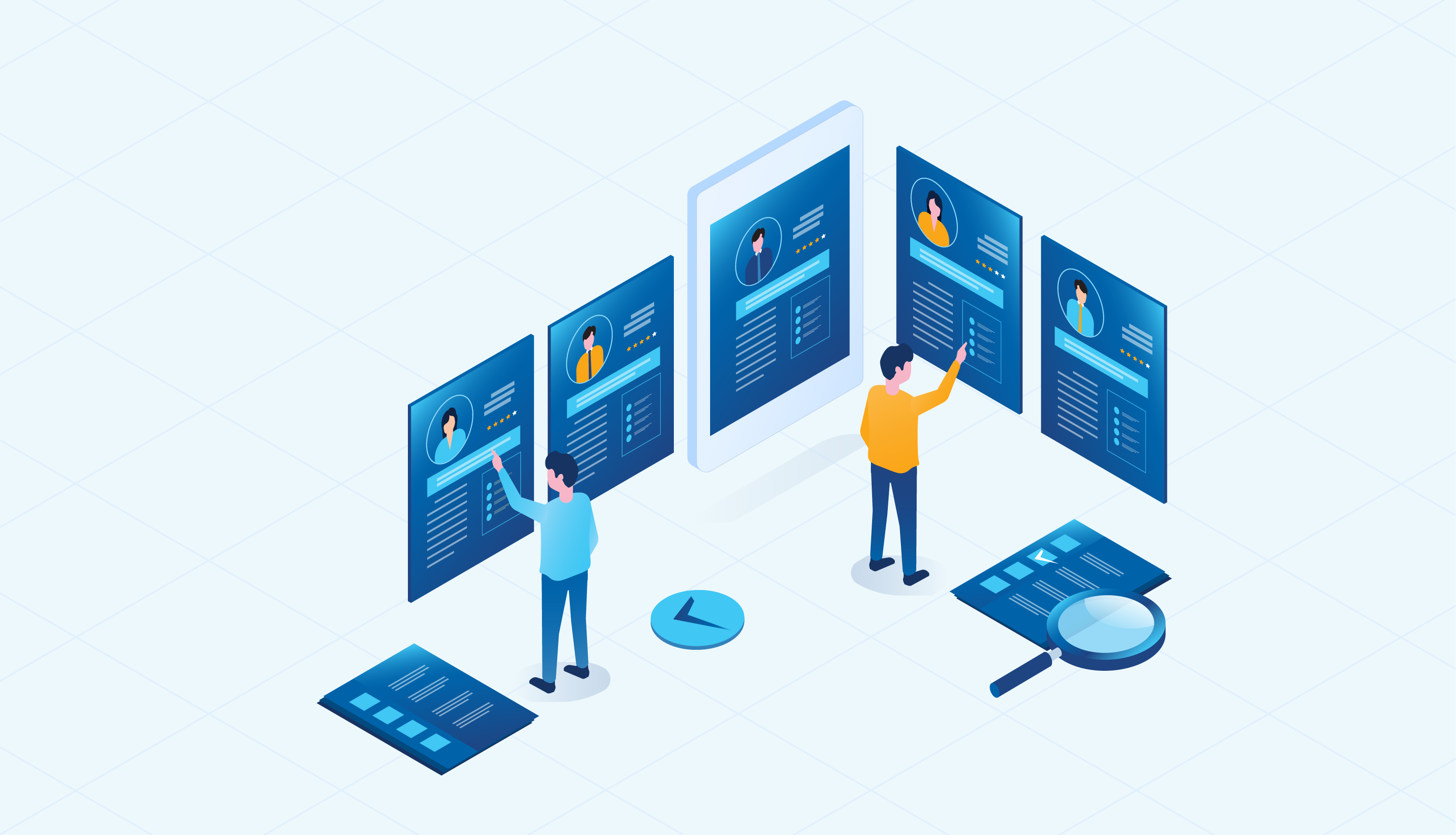Human Resource Information Systems (HRIS) have emerged as a game-changer, offering self-service portals that empower employees to manage their benefits, time-off requests, and personal data independently. By reducing the administrative burden on HR teams, these systems enhance efficiency while improving the employee experience. Platforms like Rippling and Personio exemplify how self-service features can transform workplace dynamics, fostering autonomy and satisfaction. This article explores how HRIS software achieves these outcomes and highlights real-world applications from leading platforms.
The Rise of Self-Service in HRIS Software
HRIS software, often referred to as Human Resource Management Software (HRMS), centralizes and automates core HR functions such as payroll, employee records, and performance management. A key feature of modern HRIS systems is the employee self-service (ESS) portal, a user-friendly interface that allows employees to handle HR-related tasks without HR intervention. These portals streamline processes, reduce errors, and give employees greater control over their personal and professional data.

Self-service portals address a critical pain point: the time-consuming nature of manual HR tasks. According to a 2024 study by AIHR, HR professionals can save up to two hours daily on administrative tasks by leveraging HRIS systems. By enabling employees to update their own information, request time off, or enroll in benefits, HRIS software frees HR teams to focus on strategic initiatives like talent development and workforce planning. This shift not only boosts HR efficiency but also enhances employee satisfaction by providing quick, accessible solutions.
Read more: Navigating Remote Jobs For Seniors: Flexible Work Opportunities For The Over-60 Crowd
Key Self-Service Features in HRIS Systems
Self-service portals in HRIS platforms typically offer a range of functionalities designed to empower employees. The most impactful features include:
-
Personal Data Management: Employees can update personal details such as addresses, contact information, or tax withholding preferences directly in the system. This eliminates the need for HR to process routine updates manually, reducing errors and delays.
-
Time-Off Requests: Employees can submit vacation or sick leave requests, view their leave balances, and track approval statuses in real time. Managers can approve or deny requests within the same platform, creating a seamless workflow.
-
Benefits Enrollment and Management: Self-service portals allow employees to enroll in health insurance, retirement plans, or other benefits, compare plan options, and make changes during open enrollment or after qualifying life events.
-
Access to Documents and Payslips: Employees can retrieve pay stubs, tax forms, or company policies at any time, reducing HR inquiries for document access.
-
Performance and Goal Tracking: Some HRIS systems enable employees to log progress on goals, view feedback, or participate in performance reviews, fostering transparency and engagement.
These features collectively reduce HR’s administrative workload while empowering employees to take ownership of their HR-related needs. The result is a more efficient organization and a workforce that feels trusted and valued.
Benefits of Self-Service Portals for Employees and HR
The adoption of self-service portals in HRIS systems delivers tangible benefits for both employees and HR teams. Here’s how:
For Employees
-
Convenience and Accessibility: Cloud-based HRIS platforms, accessible via web browsers or mobile apps, allow employees to manage HR tasks anytime, anywhere. For remote or hybrid workforces, this flexibility is invaluable. Rippling’s mobile app, for instance, enables employees to submit time-off requests or view payslips on the go.
-
Autonomy and Empowerment: Self-service portals give employees control over their personal information and HR processes, fostering a sense of ownership. This autonomy can boost morale and engagement, as employees feel trusted to manage their own data.

-
Transparency: Real-time access to leave balances, payslips, or performance feedback promotes transparency, helping employees make informed decisions about their benefits or career development.
-
Improved Experience: A user-friendly interface reduces frustration and enhances the overall employee experience. Personio’s intuitive design, for example, simplifies absence requests and document access, contributing to a positive user experience.
For HR Teams
-
Reduced Administrative Burden: By automating routine tasks like address updates or leave approvals, HRIS systems significantly cut down on manual work. Personio’s automated workflows, for instance, save HR teams up to 60 hours per month.
-
Fewer Errors: Manual data entry is prone to mistakes, which can lead to payroll errors or compliance issues. Self-service portals ensure employees enter their own data accurately, minimizing errors.
-
Enhanced Compliance: HRIS systems like Rippling automatically flag compliance issues and update data to align with local regulations, reducing the risk of legal penalties.
-
Strategic Focus: With less time spent on administrative tasks, HR professionals can prioritize high-impact activities such as recruitment, employee development, and organizational strategy.
These benefits create a win-win scenario, where employees enjoy a better experience, and HR teams operate more efficiently.
Read more: Automotive Window Tinting: Top Suppliers And Trends In Australia
Real-World Examples: Rippling and Personio
To illustrate the impact of self-service portals, let’s examine how two leading HRIS platforms—Rippling and Personio—leverage these features to enhance employee experience.
Rippling: Automation and Integration
Rippling’s HRIS platform is renowned for its comprehensive automation and integration capabilities, making it a top choice for small to midsize businesses. Its self-service portal empowers employees to manage a wide range of HR tasks independently, from updating personal details to enrolling in benefits. Key features include:
-
Personal Data Updates: Employees can change their address, benefits selections, or tax withholding information through Rippling’s intuitive self-service platform. These updates automatically sync across payroll, benefits, and IT systems, ensuring data consistency.
-
Time-Off Management: Employees can submit time-off requests and view their leave balances in real time. Managers receive notifications and can approve requests within the platform, streamlining the process. Rippling’s mobile app further enhances accessibility, allowing employees to manage leave requests from their smartphones.
-
Benefits Administration: Rippling’s self-service portal enables employees to compare benefit plans, enroll in coverage, and process qualifying life events independently. The platform integrates with payroll to automatically adjust deductions, simplifying benefits management for both employees and HR.
Rippling’s strength lies in its unified platform, which connects HR, IT, and finance functions. For example, when an employee updates their address, the change automatically propagates to payroll and IT systems, reducing manual updates and errors. This level of automation enhances the employee experience by providing a seamless, hassle-free interface while saving HR significant time.
Personio: Streamlined Workflows for European Businesses
Personio, a European HRIS platform, is designed for small to midsize businesses with growing teams. Its self-service portal focuses on simplifying HR processes and improving employee engagement. Notable features include:
-
Absence Management: Personio’s mobile app allows employees to request absences, track leave balances, and receive approval notifications. Automated approval workflows ensure managers can respond quickly, reducing delays.

-
Document Access: Employees can access payslips, contracts, or company policies through Personio’s centralized portal, minimizing HR inquiries. The platform’s user-friendly design ensures employees can navigate these tasks with ease.
-
Onboarding Support: Personio’s self-service portal enables new hires to complete onboarding tasks, such as filling out forms or signing documents, before their first day. This creates a positive first impression and reduces HR’s onboarding workload.
Personio’s emphasis on automation and compliance with European data standards, such as GDPR, makes it a trusted choice for businesses in the region. By automating repetitive tasks like absence approvals, Personio allows HR teams to focus on strategic initiatives, while employees benefit from a transparent and efficient system.
Challenges and Considerations
While self-service portals offer significant advantages, organizations must address potential challenges to maximize their effectiveness:
-
User Adoption: Employees may resist using self-service portals if they find the interface complex or lack proper training. HRIS platforms like Rippling and Personio mitigate this with intuitive designs, but organizations should still provide onboarding support.
-
Data Security: Self-service portals handle sensitive employee data, requiring robust security measures. Both Rippling and Personio comply with stringent data protection standards, but businesses must ensure regular audits and employee education on cybersecurity best practices.
-
Customization Needs: Some organizations may require tailored workflows that standard HRIS platforms don’t fully support. Rippling’s customizable automation recipes address this, but smaller businesses may find advanced features costly.
By proactively addressing these challenges, organizations can ensure a smooth transition to self-service HRIS systems.
The Future of Self-Service in HRIS
As HRIS technology evolves, self-service portals are expected to become even more sophisticated. Emerging trends include:
-
AI-Powered Assistance: AI chatbots within HRIS portals could guide employees through tasks like benefits enrollment or leave requests, further reducing HR involvement.
-
Personalized Dashboards: Future portals may offer customized dashboards that display relevant information based on an employee’s role or preferences, enhancing usability.
-
Integration with Collaboration Tools: Deeper integrations with platforms like Slack or Microsoft Teams could allow employees to manage HR tasks directly within their daily workflows. Rippling already supports integrations with over 600 apps, setting a strong foundation for this trend.
These advancements promise to make self-service portals even more intuitive and efficient, driving further improvements in employee experience.
Conclusion
HRIS software with self-service features is revolutionizing the way organizations manage HR processes. By empowering employees to handle personal data, time-off requests, and benefits independently, platforms like Rippling and Personio reduce HR’s administrative workload while enhancing employee autonomy and satisfaction. The benefits—convenience, transparency, and efficiency—create a positive ripple effect across the organization, allowing HR teams to focus on strategic goals. As technology continues to evolve, self-service portals will play an increasingly vital role in shaping a modern, employee-centric workplace. Investing in a robust HRIS system today is a step toward a more engaged and productive workforce tomorrow.


.jpg)










